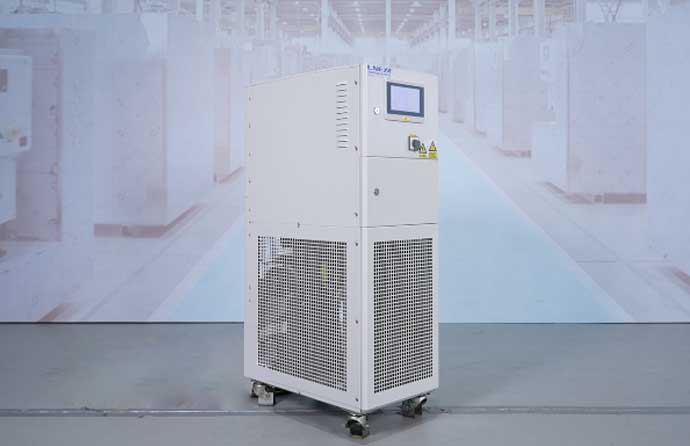What is the importance of the flow Rate in Chiller
Some chillers control only temperature, while others also regulate flow. Why does flow matter? What are the effects of flow on chillers? This article will help you understand the importance of flow management.
What is the flow rate of a chiller?
In industrial cooling systems, flow rate generally refers to the volume of chilled water passing through the evaporator per unit time, in units of L/min or m³/h. It is an important parameter for measuring the cooling capacity and operating conditions of the system.

How does chiller flow rate affect performance?
Heat exchange efficiency
The delivery of cold capacity needs to rely on the flow of chilled water. If the flow rate is too small, the chilled water cannot absorb and carry away the cooling energy from refrigerant evaporation in time, and the temperature of the terminal will rise, making it difficult to reach the set temperature. When the flow rate is too large, the chilled water will stay in the evaporator for a shorter time, and it will enter the pipeline before sufficient heat exchange, which will cause the outlet water temperature of the chilled water to rise.
Compressor stability
When the chilled water flow rate is too small, the refrigerant in the evaporator cannot be completely evaporated, which causes the temperature of the refrigerant gas inhaled by the compressor to be high. A compressor receiving overheated vapor will be overloaded and wear out faster. When the flow rate is too large, the refrigerant cannot be completely evaporated, and the compressor may inhale gas with some liquid refrigerant. The compressor cannot compress liquid. If it is compressed forcibly, it may cause liquid slugging, leading to severe mechanical damage.
Precisione del controllo della temperatura
If the flow rate of chilled water is too low, it will not be able to take away the heat generated by the equipment or process in time. If the flow rate is too high, the outlet water temperature cannot reach the expected level. This will increase the temperature of the terminal. However, the response of some chillers is lagging.
When the PID control system detects the temperature abnormality and adjusts the cooling capacity, even if the coolant resumes proper heat removal, there will be a delay in temperature response. This will cause the temperature to fluctuate from hot to cold. For some applications with high requirements for temperature uniformity, this is obviously a failed temperature control.
Energy consumption
Long-term insufficient flow increases the operating load of the compressor and prolongs the operating time of the equipment. Excessive flow will keep the water pump running at a high flow rate. This will increase the overall energy consumption and reduce the energy efficiency ratio of the chiller.
How to control the flow of chillers?
Cooling systems that cannot control the flow individually use constant speed pumps, and the output flow can remain stable, which is suitable for applications with stable loads. Refrigeratori that can adjust the flow usually use variable frequency water pumps and flow control valves. Operators can input a set value on the control panel, and the system can adjust the chilled water flow in time according to the load.
How to set the optimal chiller flow?
You can calculate the optimal flow based on the heat load of the chiller.
Q = ρ × c × ΔT × F
Q: Heat load (W)
ρ: Coolant density (kg/m³)
c: Specific heat capacity (J/kg·K)
ΔT: Inlet and outlet temperature difference (℃)
F: Required flow (m³/s)
Most chiller manufacturers will clearly tell you the minimum/maximum/rated flow range of the equipment in the operating guide. In addition, during the initial installation, the installer will determine the most suitable flow value based on the temperature difference between the inlet and outlet of the chilled water, the type of coolant, etc.
Conclusion
We hope this article can help you understand why some chillers have the function of controlling flow. If you still have questions about this, or want to purchase a chiller that can control flow, you can always contact us for support.
Related chillers
CONTATTO
TEL:
EMAIL:
WeChat & WhatsApp:

Wechat QR

Hai domande o hai bisogno di un preventivo? Compila il modulo sottostante e il nostro team ti risponderà entro 24 ore.
 Refrigeratori industriali LNEYA Produttore Fornitore
Refrigeratori industriali LNEYA Produttore Fornitore
















